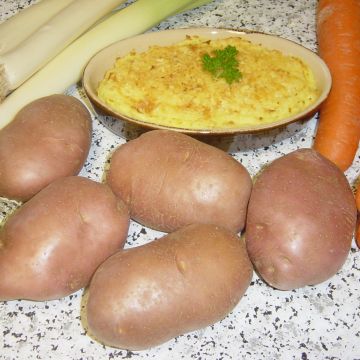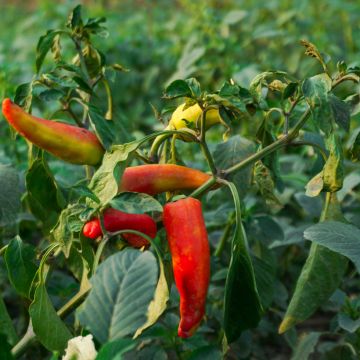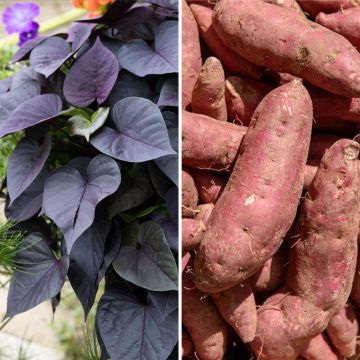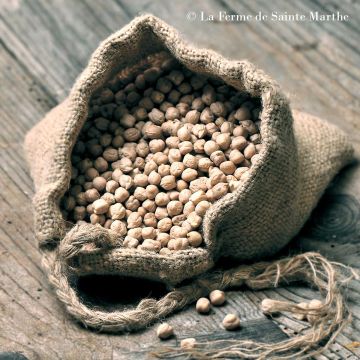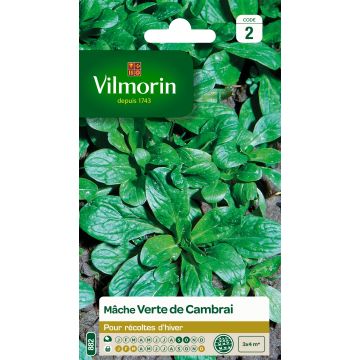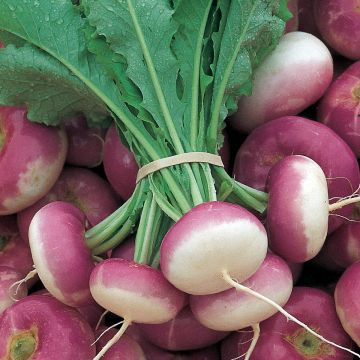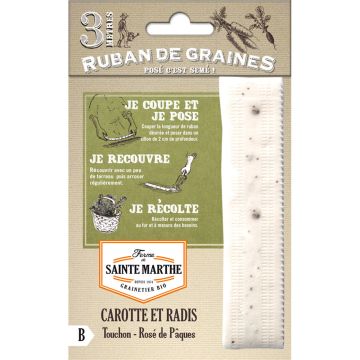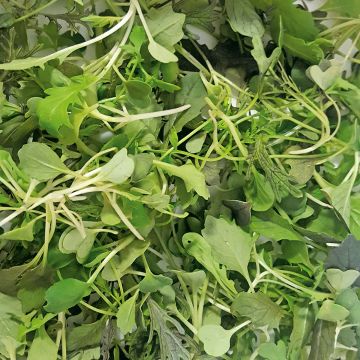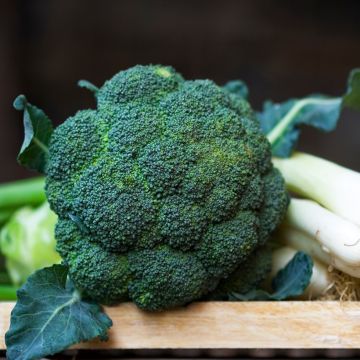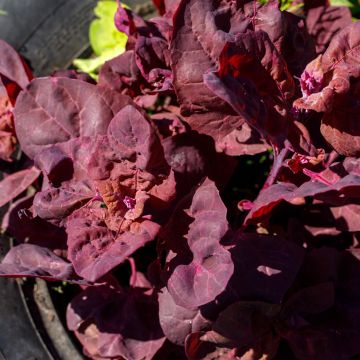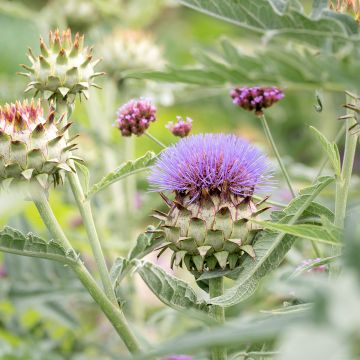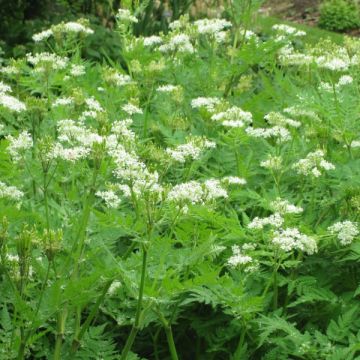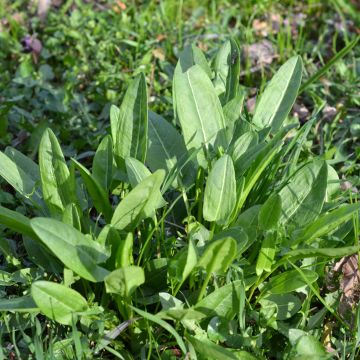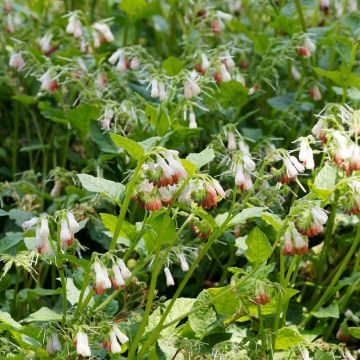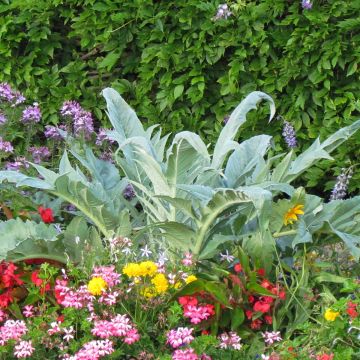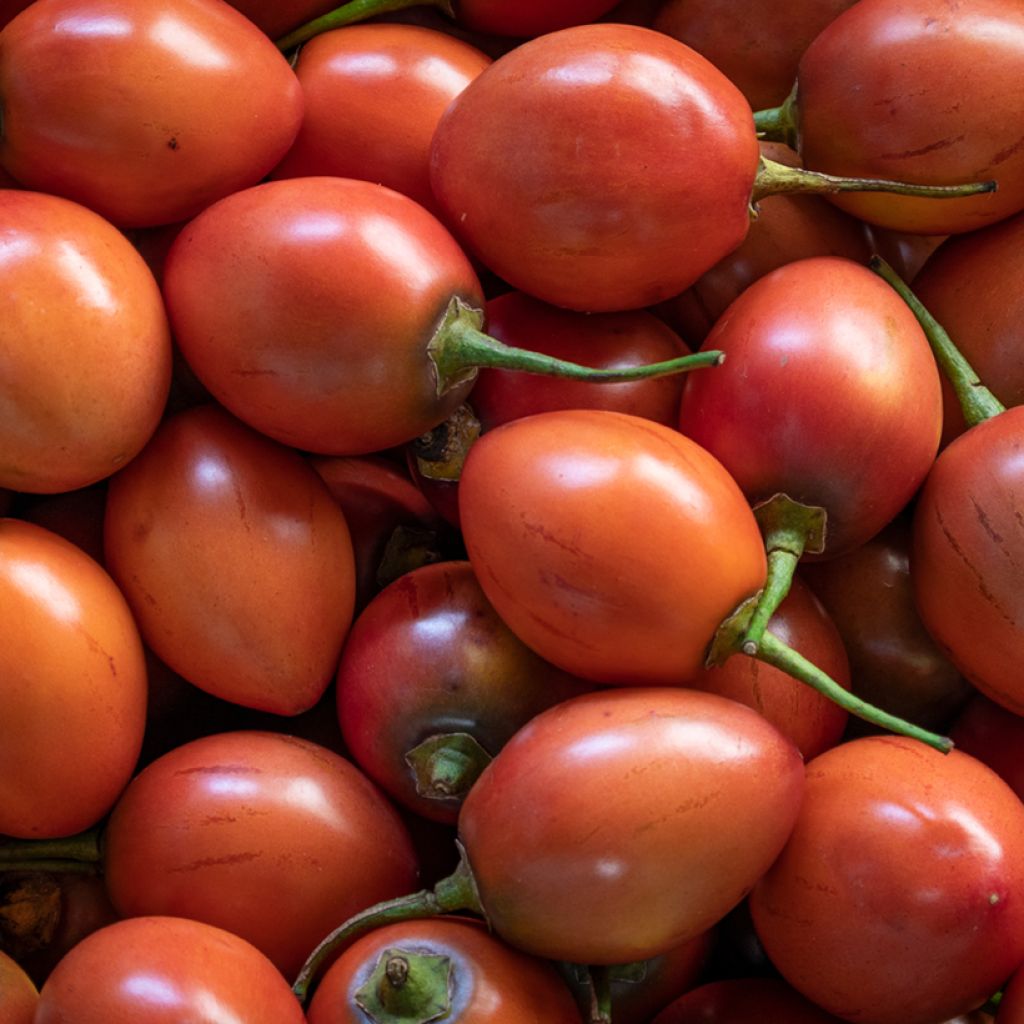

Cyphomandra betacea Red - Tamarillo, Arbre à tomates rouges
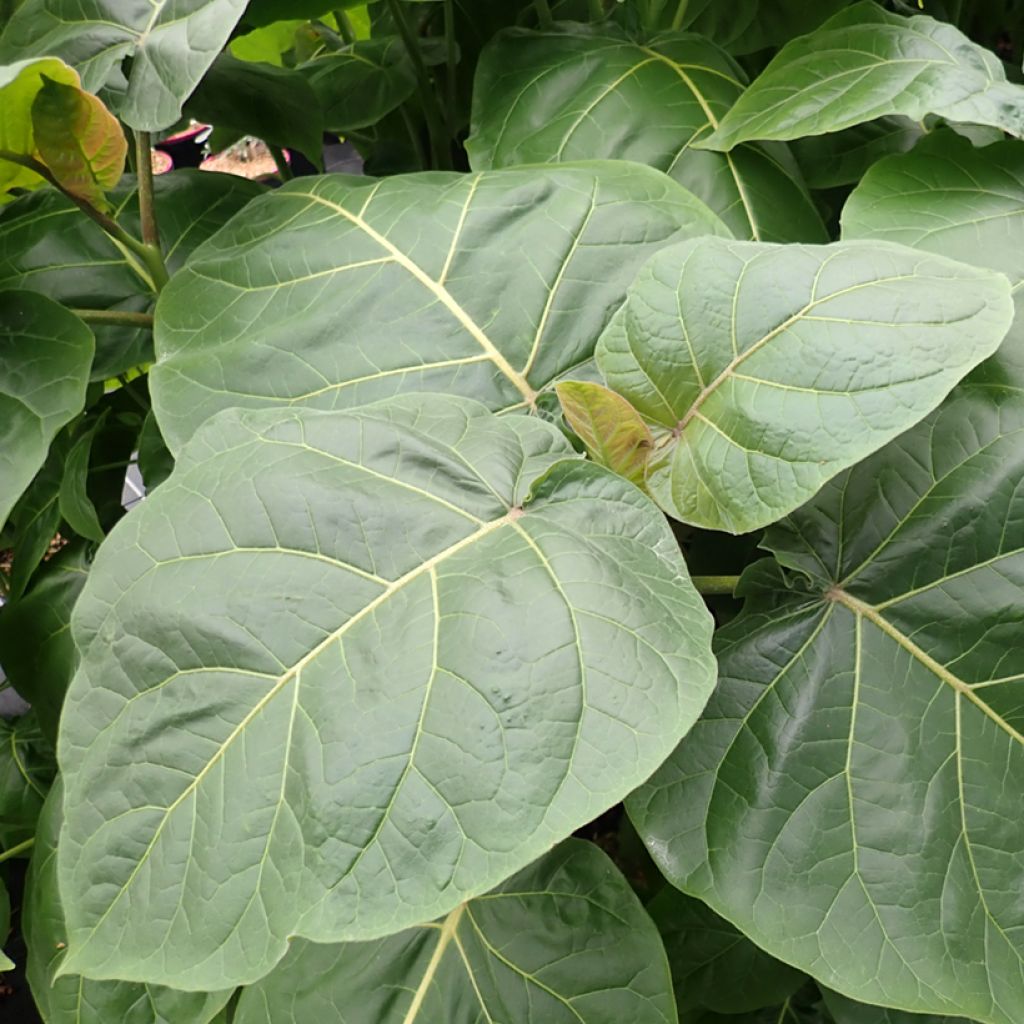

Cyphomandra betacea Red - Tamarillo, Arbre à tomates rouges
Cyphomandra betacea Red - Tamarillo
Cyphomandra betacea Red
Tree Tomato, Tamarillo
I was very disappointed, the plant was quite pretty, but it arrived with the top cut off during transport. I contacted the quality service and customer service and unless I made a mistake, I didn't receive any response.
Valérie , 27/05/2024
This item cannot be shipped to the selected country
Oversize package delivery charge from €6.90
More information
Schedule delivery date,
and select date in basket
This plant carries a 6 months recovery warranty
More information
We guarantee the quality of our plants for a full growing cycle, and will replace at our expense any plant that fails to recover under normal climatic and planting conditions.
Oversize package: home delivery by special carrier from €6.90 per order..
Express home delivery from €8.90.
Description
The Citrus Trees à tomatoes, the Tamarillo, in Latin Solanum or Cyphomandra betaceum "Red", is a bushy plant cultivated for its egg-shaped red fruits with a tangy taste reminiscent of kiwi or gooseberry. The bush is not lacking in attractiveness, with its luxuriant leaves and clusters of small white to pale pink flowers with a slight fragrance. This tender plant needs warmth and will only be planted in the ground in warm climates, with fertilization and regular watering in summer. Elsewhere, it is cultivated in a greenhouse or in a large pot to overwinter frost-free. Planting in spring and harvest from summer to autumn.
The Tamarillo belongs to the Citrus Trees family, just like tomatoes, potatoes, peppers, or eggplants. It is an evergreen bush native to the Andes mountain range in South America. Its common name "Tree Tomato" comes from its relation to tomatoes, but also from its fruits that vaguely resemble elongated tomatoes. There are two main cultivated varieties of Tamarillo: a golden orange variety with yellow flesh, and a purple-red variety with orange flesh, called 'Red'. In nature, the bush reaches a height of 4-5 m (13-16ft). In our climates, it grows quickly but generally does not exceed 3 m (10ft) in height. The plant dies at temperatures below -3°C. The evergreen foliage in winter consists of fuzzy green leaves up to 30 cm (12in) long. In spring, clusters of small decorative white to pink star-shaped flowers appear. The smooth-skinned fruits are oval, covered with a shiny, leathery epidermis that turns dark red, even Bordeaux, when ripe. They measure between 6 and 10 cm (2 and 4in) long and hang from a long stalk. Their orange flesh contains small black seeds, is aromatic, and becomes tangy when fully ripe. However, the skin is inedible. All plants in the Citrus Trees family contain toxic compounds in their tissues (leaves, stems, roots, immature fruit skin).
Rich in vitamins, Tamarillo flesh is both sweet and tangy. They can be enjoyed raw, scooped out with a spoon, opened in half like kiwis (add a little lime juice and sugar), or in fruit salads. They can also be prepared as chutneys, preserved in vinegar, made into compotes and jams, or cooked like vegetables. In Colombia, they are also consumed as juice.
Harvesting: The fruits are harvested when ripe, in summer and autumn, as they ripen.
Storage: The fruits can be stored for a few days in a cool place at 10°C.
Gardeners who enjoy culinary delights and curious plants will also cultivate the Pear Melon, the Caviar Lemon, the Goji Berry, the Passionfruit, or even the Purple Kiwai female, for example.
A gardening tip: We recommend mulching the soil with thin successive layers of grass clippings, if possible mixed with dead leaves. This protection, which keeps the soil moist, also reduces weeding.
Report an error about the product description
Cyphomandra betacea Red - Tamarillo in pictures
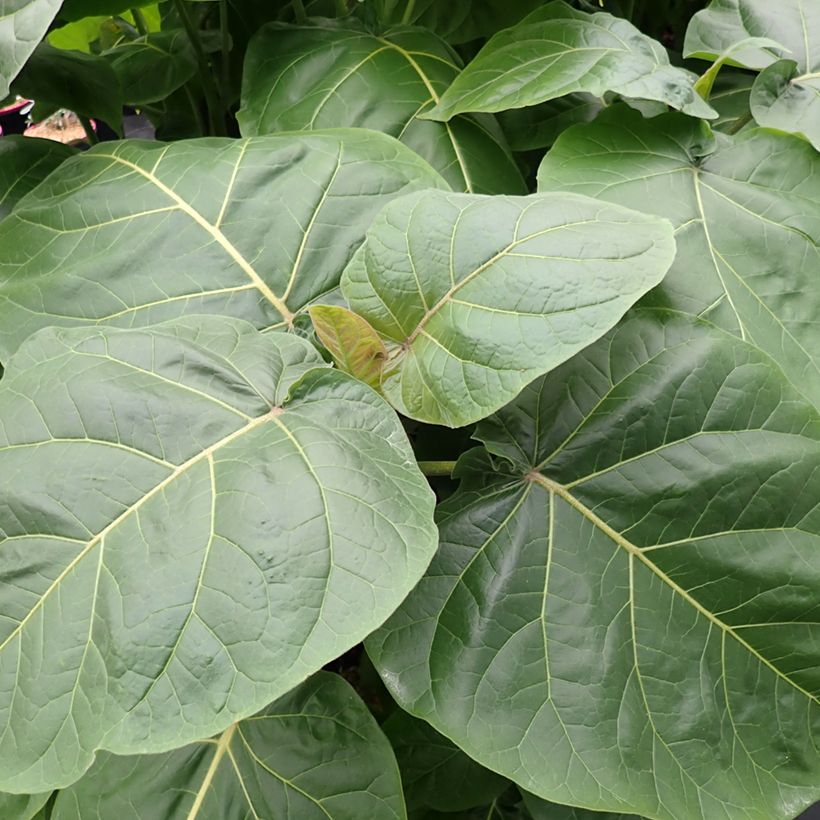

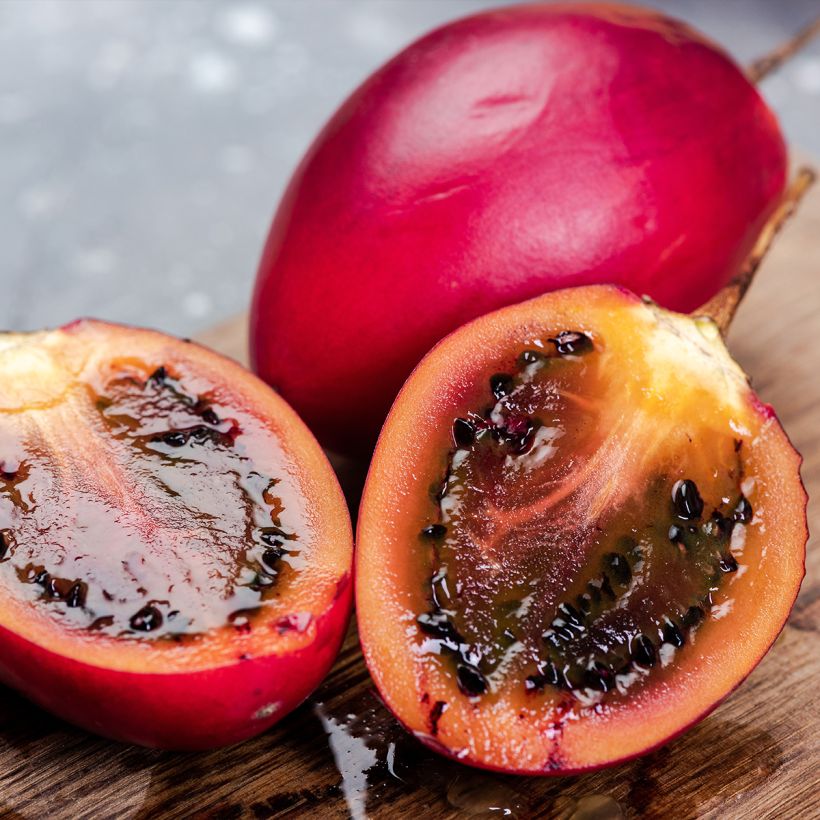

Harvest
Plant habit
Foliage
Other Vegetable garden A to Z
Planting and care
Plant your tree tomato in full sun, in a sheltered position from strong winds, in fertile, rich, light soil that does not dry out (but not waterlogged). Tender, this bush can only be grown in open ground in the so-called orange zone, with regular watering and fertilizer applications. Protect your tamarillo from the cold (mulching, winter cover). Elsewhere, it is grown in pots.
In a pot: place a layer of gravel at the bottom of the pot and fill it with a mixture of potting soil and topsoil. Place the root ball, cover with soil and lightly compact. Water to keep the soil moist. During growth, water regularly (1 to 2 times a week). Add tomato-specific fertilizer to your watering twice a month. Repot or top-dress in spring. Remember to bring the pots indoors in autumn, before the first frosts. Water sparingly in winter.
Cultivation
Care
Intended location
-
, onOrder confirmed
Reply from on Promesse de fleurs
Old and forgotten vegetables
Haven't found what you were looking for?
Hardiness is the lowest winter temperature a plant can endure without suffering serious damage or even dying. However, hardiness is affected by location (a sheltered area, such as a patio), protection (winter cover) and soil type (hardiness is improved by well-drained soil).

Photo Sharing Terms & Conditions
In order to encourage gardeners to interact and share their experiences, Promesse de fleurs offers various media enabling content to be uploaded onto its Site - in particular via the ‘Photo sharing’ module.
The User agrees to refrain from:
- Posting any content that is illegal, prejudicial, insulting, racist, inciteful to hatred, revisionist, contrary to public decency, that infringes on privacy or on the privacy rights of third parties, in particular the publicity rights of persons and goods, intellectual property rights, or the right to privacy.
- Submitting content on behalf of a third party;
- Impersonate the identity of a third party and/or publish any personal information about a third party;
In general, the User undertakes to refrain from any unethical behaviour.
All Content (in particular text, comments, files, images, photos, videos, creative works, etc.), which may be subject to property or intellectual property rights, image or other private rights, shall remain the property of the User, subject to the limited rights granted by the terms of the licence granted by Promesse de fleurs as stated below. Users are at liberty to publish or not to publish such Content on the Site, notably via the ‘Photo Sharing’ facility, and accept that this Content shall be made public and freely accessible, notably on the Internet.
Users further acknowledge, undertake to have ,and guarantee that they hold all necessary rights and permissions to publish such material on the Site, in particular with regard to the legislation in force pertaining to any privacy, property, intellectual property, image, or contractual rights, or rights of any other nature. By publishing such Content on the Site, Users acknowledge accepting full liability as publishers of the Content within the meaning of the law, and grant Promesse de fleurs, free of charge, an inclusive, worldwide licence for the said Content for the entire duration of its publication, including all reproduction, representation, up/downloading, displaying, performing, transmission, and storage rights.
Users also grant permission for their name to be linked to the Content and accept that this link may not always be made available.
By engaging in posting material, Users consent to their Content becoming automatically accessible on the Internet, in particular on other sites and/or blogs and/or web pages of the Promesse de fleurs site, including in particular social pages and the Promesse de fleurs catalogue.
Users may secure the removal of entrusted content free of charge by issuing a simple request via our contact form.
The flowering period indicated on our website applies to countries and regions located in USDA zone 8 (France, the United Kingdom, Ireland, the Netherlands, etc.)
It will vary according to where you live:
- In zones 9 to 10 (Italy, Spain, Greece, etc.), flowering will occur about 2 to 4 weeks earlier.
- In zones 6 to 7 (Germany, Poland, Slovenia, and lower mountainous regions), flowering will be delayed by 2 to 3 weeks.
- In zone 5 (Central Europe, Scandinavia), blooming will be delayed by 3 to 5 weeks.
In temperate climates, pruning of spring-flowering shrubs (forsythia, spireas, etc.) should be done just after flowering.
Pruning of summer-flowering shrubs (Indian Lilac, Perovskia, etc.) can be done in winter or spring.
In cold regions as well as with frost-sensitive plants, avoid pruning too early when severe frosts may still occur.
The planting period indicated on our website applies to countries and regions located in USDA zone 8 (France, United Kingdom, Ireland, Netherlands).
It will vary according to where you live:
- In Mediterranean zones (Marseille, Madrid, Milan, etc.), autumn and winter are the best planting periods.
- In continental zones (Strasbourg, Munich, Vienna, etc.), delay planting by 2 to 3 weeks in spring and bring it forward by 2 to 4 weeks in autumn.
- In mountainous regions (the Alps, Pyrenees, Carpathians, etc.), it is best to plant in late spring (May-June) or late summer (August-September).
The harvesting period indicated on our website applies to countries and regions in USDA zone 8 (France, England, Ireland, the Netherlands).
In colder areas (Scandinavia, Poland, Austria...) fruit and vegetable harvests are likely to be delayed by 3-4 weeks.
In warmer areas (Italy, Spain, Greece, etc.), harvesting will probably take place earlier, depending on weather conditions.
The sowing periods indicated on our website apply to countries and regions within USDA Zone 8 (France, UK, Ireland, Netherlands).
In colder areas (Scandinavia, Poland, Austria...), delay any outdoor sowing by 3-4 weeks, or sow under glass.
In warmer climes (Italy, Spain, Greece, etc.), bring outdoor sowing forward by a few weeks.

































